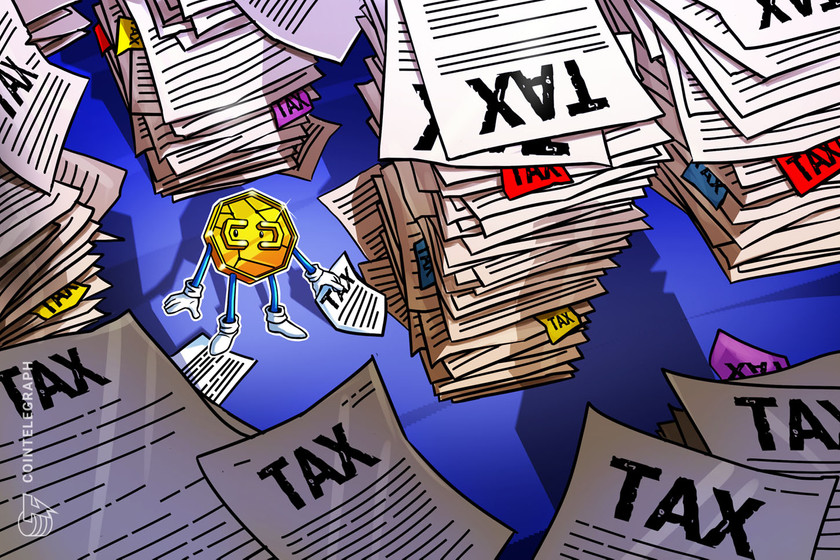New tax rules could mean a US exodus for crypto companies


A change to R&D tax rules means that a tech company could lose more than $1 million — but still be on the hook for hundreds of thousands in taxes.
All eyes are on the implosion of crypto banking and bank runs. Unfortunately, there is another poison that will destroy the tech industry — and it’s already eating at the core of newly successful startups. That poison is a change to research and development (R&D) credit rules under section 174. The change passed as part of the 2017 Tax Cuts and Jobs Act but was deferred until 2023 — triggering massive tax bills for already cashflow-strapped companies.
The new R&D law has overly broad language that states “any and all” software development must be amortized over five years if the development took place in the United States, or over 15 years if the work was done overseas. The change doesn’t sound so bad on its surface; some argue it might even create more tech jobs in the U.S.
But that isn’t how it will play out. Many countries have better R&D credits than the U.S. Much of U.S. software development will shift to countries such as the United Kingdom, where the rules are simpler and more lucrative. For tax-smart companies, U.S. entities will just be for marketing and sales.
Imagine a company that lost over a million dollars but owes over $300,000 in taxes! How is this possible? This hypothetical company has roughly $2.5 million in income and, in 2022, spent $1.5 million building its software and $1 million in other costs, meaning it had a negative cashflow totaling $1 million dollars. However, because the $1.5 million of development was done by a team in India, it will only see $50,000 from the software development side, leaving a $1,050,000 deduction to offset the $2.5 million of income this year — meaning it owes tax on $1,450,000 in net income, or a bankrupting $304,500 in tax!


Proponents of this tax say companies will still receive all the benefits of the deduction — just over many years. Put one of these proponents in front of a company that lost a million on operations but owes $300,000 in taxes and see if they say the same thing. Cashflow is king for finding startup success, and these types of R&D costs have been deducted nearly as long as the United States has had an income tax because of how vitally important innovation is to fueling national growth. With the current climate of high-interest rates and increased regulation, this law change will kill the most creative development in the U.S. on future-thinking technologies, such as AI and blockchain.
Some of the Big Tech layoffs taking place may be a result of this rule change. No surprise: It makes more sense to restructure so that subsidiaries outside the U.S. do R&D. For blockchain, crypto, and nonfungible token (NFT) companies that already have to deal with all the Securities and Exchange Commission scrutiny, it just seems a no-brainer to distance from the U.S. now.
Related: Get ready for a swarm of incompetent IRS agents in 2023
There are so many complications and unanswered questions of how to apply this law that it’s head-spinning. For example, if you use a computer, server, miner, etc., for your R&D that you are depreciating, that portion of depreciation you would be able to take in 2022 must be added to the capitalization bucket to amortize out. This means if you were using this utility in the U.S. and expected to have $50,000 in depreciation come through from that equipment to deduct this year, you would only see $5,000 of that actually affect the bottom line. This really negates the purpose of special depreciation rules that encourage companies to spend on equipment, but then doesn’t actually let them see the deduction.
Another big risk with this law is if you raise money and develop with a big loss and no current income. Initially, this wouldn’t hurt you — but if your company fails, you are in for a world of pain, because the cancellation of debt income from a SAFE note that was not repaid can trigger taxes if there are no net operating loss carryovers to fully offset. And there is no way, currently, to accelerate the R&D amortization; even if a project is abandoned or a company shuts down, the expenditure cannot be taken immediately. That means equity investors may not get back funds they should receive. Instead, the money in the treasury will go to paying taxes for a failed company while founders who received salaries may even be on the hook for the tax liability or repaying investors.
Related: Biden is hiring 87,000 new IRS agents — and they’re coming for you
Everyone in government and the tax industry knew these laws were a mess, and they were set to be repealed by a bipartisan supported bill in Congress on Jan. 3. But the effort failed because Democrats wanted to increase the Child Tax Credit — at the last minute — after everything had been agreed, and Republicans wouldn’t go along with it.
Now, it seems we are stuck with this crazy innovation-killing tax law. A repeal proposal has been reintroduced but hasn’t gained much traction. Especially in light of the current fundraising challenges for blockchain companies caused by increased interest rates, the crypto winter, and the Silicon Valley Bank failure, we may see a massive and unnecessary die-off of tech companies, unless some major action is taken by Congress quickly.
This article is for general information purposes and is not intended to be and should not be taken as legal or investment advice. The views, thoughts, and opinions expressed here are the author’s alone and do not necessarily reflect or represent the views and opinions of Cointelegraph.















